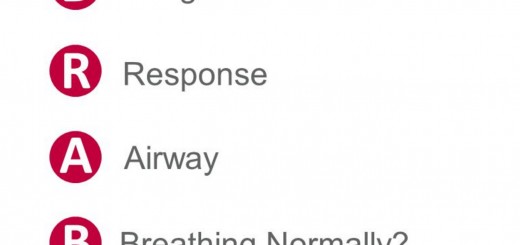How to place defibrillator pads on a victim
A defibrillator delivers an electrical shock to a victim in cardiac arrest. In order for the shock to be delivered, two chest pads must be placed on the victim to conduct the shock though the heart muscle.
Before applying the defibrillator pads ensure that:
- make sure that the skin is clean and dry
- do not use alcohol wipes
- if the chest is excessively hairy, remove hair with razor or shears, for improved pad to skin contact
Correct positioning of the pads is essential for successful defibrillation to take place. The optimal position is indicated on the pads, on the packaging they come in, and on the AED itself:
- place one pad to the right of the sternum (breastbone) below the collarbone and above the right nipple
- place the second pad to the left of the sternum, with the upper edge of the pad below and to the left of the nipple
- do not place pads over medication patches
- if the casualty has an implanted pacemaker or defibrillator, make sure that the pads are at least 8 cm away from it
- apply pads with a smooth rolling action to prevent air bubbles
- once applied, pads should not be repositioned or removed unless prompted by the AED
- for children, (or adults if the front and back of the chest are clean and dry and readily accessible, e.g. not covered with sand), pads can be placed one in the front centre of the chest and the other between the shoulder blades
What about pacemakers or ICDs?
A pacemaker is a small device that is implanted under the skin of the chest to help control abnormal heart rhythms. The pacemaker uses electrical pulses to prompt the heart to beat at a normal rate. Most modern pacemakers are roughly the size of a 50 cent piece, and approximately three times as thick. The battery life of most pacemakers today is 5-8 years.
An implanted defibrillator (ICD) is a small device that is implanted under the skin of the chest to detect ventricular fibrillation. The person may be aware of the device discharging on those occasions when their heart rhythm degenerates into VF, and discharge of the defibrillator is required to revert the VF rhythm to normal sinus rhythm.






